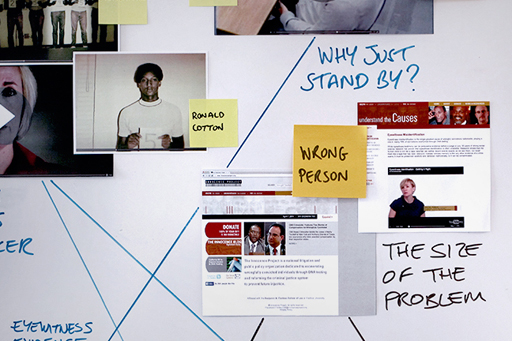2.3 The size of the problem – the Innocence Project
Eyewitnesses frequently identify the wrong person, as you learned in Section 2.1, Causes of miscarriages of justice. This is very worrying indeed. The problem is so significant that it has become the central focus of the Innocence Project, a US organisation dedicated to exonerating wrongfully convicted individuals through DNA testing.
The Innocence Project has an excellent website that contains a great deal of information on how miscarriages of justice occur and case files of all the wrongfully convicted people that the organisation has so far helped find justice.
Visit the Innocence Project website [Tip: hold Ctrl and click a link to open it in a new tab. (Hide tip)] and look at the section labelled Understand the causes. Also have a look at some of the Case profiles to see the impact a misidentification can have on someone’s life.
One of the most famous cases of wrongful conviction that the Innocence Project investigated was that of Ronald Cotton, who was charged with rape and burglary and served ten and a half years in prison (the sentence was for life plus 54 years).
Activity 4 Miscarriages of justice
Consider your thoughts about the miscarriages of justice. Has anything shocked you about wrongful convictions? Have your views changed about:
- the usefulness of witness evidence?
- the prevalence of police misconduct?
- the accuracy of forensic science?
- or about police investigations and criminal trials in general?
Discussion
Keep a note of your responses to these questions. You might find it interesting to revisit them when you have completed the course.

